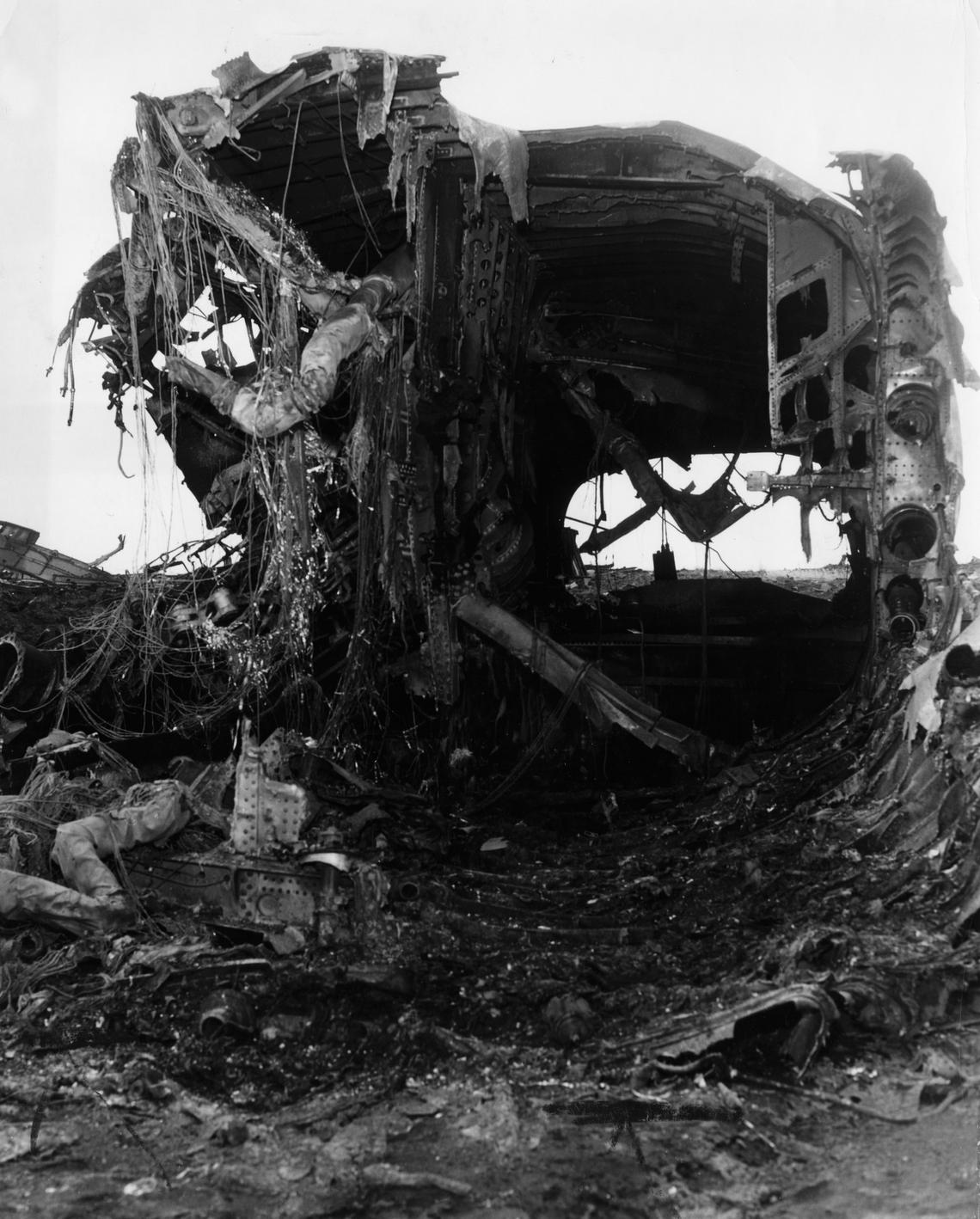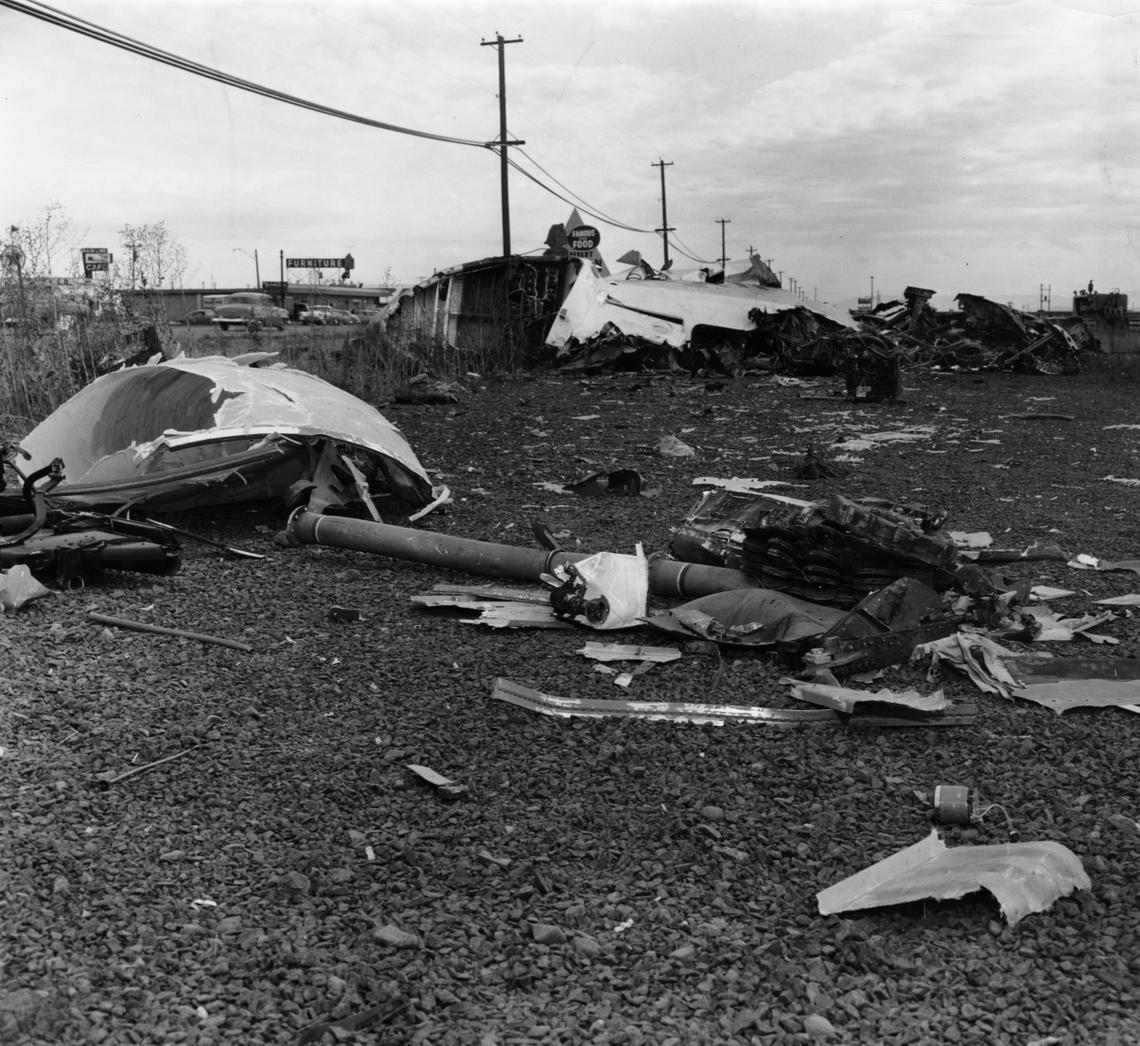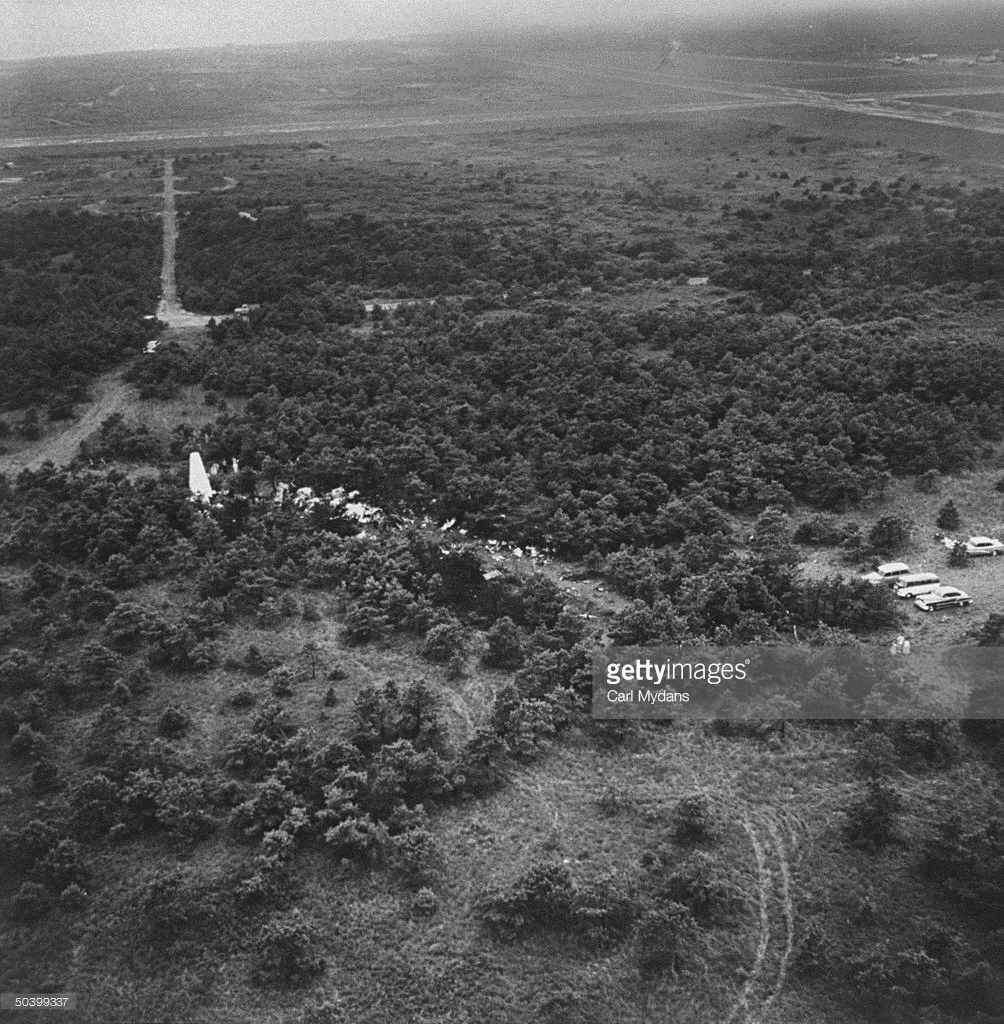Crash of a Douglas SC-47 at Elmendorf AFB: 13 killed
Date & Time:
Sep 9, 1958
Registration:
43-15345
Survivors:
Yes
Schedule:
Elmendorf – Eielson
MSN:
19811
YOM:
1944
Crew on board:
2
Crew fatalities:
Pax on board:
18
Pax fatalities:
Other fatalities:
Total fatalities:
13
Circumstances:
Shortly after takeoff from Elmendorf AFB, while in initial climb, the airplane stalled and crashed in flames. Seven passengers were rescued while 13 other occupants were killed. It is believed the accident was the consequence of an engine failure shortly after rotation.











